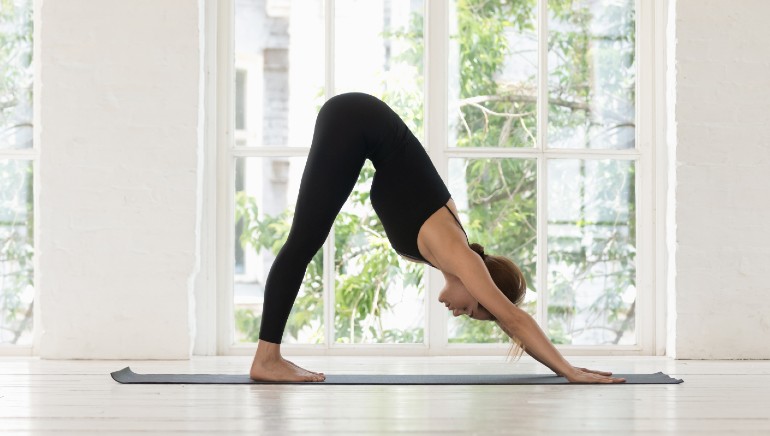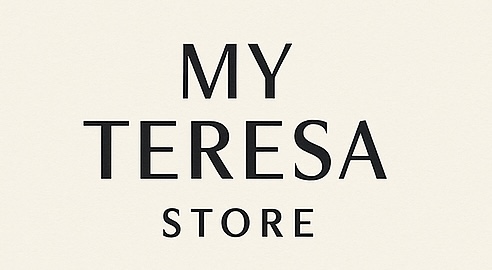
These beginner yoga poses to relieve chronic pain and body stiffness, promote flexibility, strength, and relaxation.
Practising yoga can be an excellent solution for relieving chronic body stiffness, a common issue for many people, often arising from a sedentary lifestyle, extended hours at a desk, or poor posture. This stiffness can cause discomfort, fatigue, and reduced mobility. However, yoga for chronic pain offers a holistic remedy to release muscular tension and promote flexibility and relaxation throughout the body, making it especially beneficial for individuals seeking yoga as a means to manage chronic pain. Discover seven beginner-friendly yoga poses for chronic pain and stiffness.
How does yoga for chronic pain help?
Yoga for chronic pain incorporates a combination of physical postures, breathing techniques, and mindfulness, creating an environment that nurtures both physical and mental health. According to a study cited by PubMed Central, the following points highlight how yoga can be beneficial in this regard:
- Increases flexibility: Regular yoga practice helps to stretch tight muscles, effectively relieving areas of stiffness. Increased flexibility can make daily movements smoother and reduce the risk of injuries.
- Strengthens muscles: Many yoga poses target key muscle groups, enhancing strength and stability, which is vital for protecting the body and preventing injuries related to muscle weakness.
- Calms the mind: In addition to its physical benefits, yoga for chronic pain promotes mindfulness and relaxation, which can help lower stress levels. Since stress often worsens physical discomfort, practising yoga can help create a more balanced mental state, contributing to overall physical well-being.
Yoga poses for relieving chronic pain and stiffness
Let’s explore seven effective yoga poses for chronic pain that can help alleviate body stiffness and discomfort, as suggested by yoga expert Himalayan Siddhaa Akshar.
1. Balasana (child’s pose)
- Benefits: Balasana is a resting pose that helps to relax the lower back, hips, and legs, making it a beneficial practice for those dealing with chronic pain. This yoga for chronic pain can be particularly effective, as it is perfect for calming the nervous system and can be an excellent way to begin your practice.
- Muscles activated: Stretches the lower back, hips, and thighs.
How to perform:
- Kneel on the floor, bringing your big toes together and sitting back on your heels.
- With your knees apart, hinge forward at your hips and lower your torso between your thighs.
- Extend your arms forward or relax them by your sides.
- Hold for several breaths, focusing on deepening your breath and releasing tension.
2. Marjaryasana-bitilasana (cat-cow pose)
- Benefits: This dynamic pose sequence enhances spinal mobility and promotes fluidity throughout the body by alternating between spinal extension and flexion, making it particularly beneficial for individuals practising yoga for chronic pain.
- Muscles activated: Stretches the spine, neck, shoulders, and abdominal muscles.
How to perform:
- Begin on your hands and knees in a tabletop position, with wrists directly under shoulders and knees under hips.
- Inhale, arch your back (cow pose) by lifting your head and tailbone towards the ceiling.
- Exhale, round your spine (cat pose) by tucking your chin to your chest and drawing your belly towards your spine.
- Continue this flow for 5-10 rounds, synchronising your breath with each movement.
3. Adho mukha svanasana (downward-facing dog)
- Benefits: This core yoga posture is beneficial for yoga practitioners with chronic pain, as it stretches the entire body, particularly the hamstrings, calves, and shoulders. Yoga for chronic pain also helps lengthen the spine and alleviate stiffness in the legs and lower back.
- Muscles activated: Stretches the hamstrings, calves, shoulders, and spine.

How to perform:
- Start in a tabletop position and tuck your toes under as you lift your hips up and back, straightening your legs.
- Keep your hands shoulder-width apart and press your heels towards the ground.
- Your body should form an inverted “V” shape.
- Hold for several breaths, allowing your head to hang freely between your arms.
4. Ustrasana (camel pose)
- Benefits: A profound backbend, Ustrasana opens the chest, abdomen, and hip flexors. It’s beneficial for relieving stiffness caused by prolonged sitting, making it an excellent option for yoga for chronic pain.
- Muscles activated: Stretches the entire front body, including the chest, abdomen, thighs, and hip flexors.
How to perform:
- Kneel on the floor with your knees hip-width apart.
- Place your hands on your lower back, fingers pointing down, and press your hips forward while gently arching your back.
- Optionally, reach for your heels with your hands for a deeper stretch.
- Keep your neck relaxed and look slightly upward. Hold for a few breaths, then slowly return to a kneeling position.
5. Bhujangasana (cobra pose)
- Benefits: This gentle backbend opens the shoulders and chest while strengthening the spine, which helps improve posture and alleviate slouching, making it particularly beneficial for individuals practising yoga for chronic pain management.
- Muscles activated: Stretches the chest, shoulders, and abdomen while strengthening the back muscles.
How to perform:
- Lie face down on the floor with your legs straight and feet hip-width apart.
- Place your hands under your shoulders and press into the ground as you lift your chest.
- Keep your elbows slightly bent and draw them back, opening your shoulders.
- Look slightly upwards and hold for a few breaths, feeling the stretch along your spine.
6. Supta matsyendrasana (supine spinal twist)
- Benefits: This gentle twist stretches the shoulders, hips, and spine, promoting relaxation and increasing spinal flexibility, making it an excellent pose for those practising yoga for chronic pain management.
- Muscles activated: Stretches the spine, hips, and chest.
How to perform:
- Lie on your back with your arms extended out to the sides.
- Draw one knee towards your chest and then guide it across your body towards the floor on the opposite side while keeping your shoulders grounded.
- Hold for several breaths, then switch sides.
7. Shavasana (corpse pose)
- Benefits: Typically performed at the end of a yoga session, Shavasana enables the body to deeply unwind and absorb the benefits of the practice, particularly in yoga for chronic pain, promoting a profound sense of relaxation. Yoga for chronic pain enhances this experience by allowing individuals to fully experience the relief and restoration that comes from a dedicated practice.
- Muscles activated: While this pose does not actively engage muscles, it promotes relaxation throughout the body.
How to perform:
- Lie flat on your back with your legs slightly apart and arms relaxed by your sides, palms facing up.
- Close your eyes and focus on your breath, allowing your body to feel heavy on the ground.
- Stay in this pose for at least 5-10 minutes, letting go of any remaining tension.
Disclaimer: At Health Shots, we are committed to providing accurate, reliable, and authentic information to support your health and well-being. However, the content on this website is intended solely for informational purposes and should not be considered a substitute for professional medical advice, diagnosis, or treatment. Always consult a qualified healthcare provider for personalised advice regarding your specific medical condition or concerns.







